Based on a talk delivered at “Reconstructionists Expanding Our Conversation About Israel/Palestine”
Dedicated to the memory of Vincent Harding, z”l. Vincent taught me about love, personal courage and active nonviolent resistance.
1. INTRODUCTION
The Two Narratives/Ben-Gurion’s Visit
I want to explore the experience of Palestinians in 1948 and then offer a Jewish ethical and spiritual response. I believe that confronting the reality of what happened to Palestinians in 1948 and that has continued to this very moment, is the most important spiritual/ethical issue facing Jews and Judaism in our time.
Jews and Palestinians see what happened in 1948 completely differently. Most Jews see the founding of the State of Israel in 1948 as a miraculous achievement of the Jewish People in response to centuries of suffering leading up to the Holocaust. Jews call the war of 1948 Milkhemet Haatzmaut/the War of Independence or Milkhemet Hashikhrur/The War of Liberation. Zionists believe that Israel provided Jews with a safe home in a hostile world.
Palestinian Perspective
For Palestinians, the meaning of 1948 couldn’t be more different. Palestinians refer to 1948 as al Nakba, the “catastrophe” or “disaster.” During the war, 750,000 Palestinians, three-quarters of the Palestinians who lived in what became Israel were forced off their land and became refugees when they were denied the right to return to their homes and land by Israel. Between 400 and 500 Palestinian villages were destroyed and then hidden with trees planted over them by the Jewish National Fund to hide their existence. The Palestinian names of most of the villages were changed into Hebrew names and regarded as if they never existed. While Jews believe that 1948 brought safety and liberation, for Palestinians, it was a catastrophe.[1]
I want to share some thoughts about the role of Zionism and Israel in my family and childhood, and a significant personal story that directly relates to the Nakba and the concept of Nakba Denial.
I was born in Cape Town, in apartheid South Africa, seven years after the Holocaust and four years after the establishment of the State of Israel. In my family and in our small Jewish community, Zionism and Israel were the center of our Jewish lives. My siblings and I all went to Israel during our schooling, three of us and my mom all made aliyah and lived in Israel for extended periods of time. I was the first in our family to make aliyah in 1970 to devote my life to building a Jewish socialist society in Israel based on the Jewish prophetic values of justice and equality.
Ben-Gurion’s Visit: The Story
In 1969, when I was a senior at Herzlia High School, David Ben-Gurion, the first prime minister of the State of Israel, came to Cape Town. I was planning on making aliyah to Israel within a year of his visit, and I can’t overestimate what his visit meant to me personally and to our community. In our eyes, Ben-Gurion was a Jewish superhero, a true rock star!
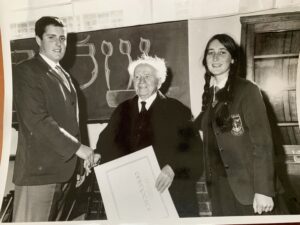
During his visit, Ben-Gurion met with the madrikhim/counselors of the Zionist youth movements. I was a very young madrikh in Habonim and attended the event. A madrikh from Hashomer Hatzair, a group to the left of Ben-Gurion’s party, asked him whether Israeli forces had expelled Palestinians in the 1948 war. Ben-Gurion’s response to the question was explosive. Red in his face, banging on the podium, he adamantly asserted that “not one Palestinian was expelled!” All the charges about expulsion were lies. Not only weren’t Palestinians expelled, he said, but the Israeli leaders and army pleaded with the Arabs to stay, and promised them security and peace. The Palestinians rejected those pleas, choosing instead to follow the call of the Mufti of Jerusalem and other Arab leaders who encouraged them to leave their homes, join the Arab forces and “drive the Jews into the sea.” He added that the Mufti promised the Palestinians not only their own house but a second house once they had successfully defeated the Jews.
Unbeknownst to me at the time, that moment was my first introduction to Nakba Denial and to the concept of Nakba itself. Nakba Denial is the denial of the Zionist expulsion and dispossession of the majority of Palestinians who lived on the territory on which Israel was created.
I was 17 at the time I heard Ben-Gurion’s talk; I am now 70 years old. Over these 53 years, I devoted many years building support in the American Jewish community for Israeli Jews who work hard to uphold a vision of Israel that would provide justice, equality and freedom for all its citizens. This has included groups like Breaking the Silence, Rabbis for Human Rights, The Israeli Committee Against Home Demolition, Taayush and others. In the past decade or two, I have also directly supported Palestinians engaged in nonviolent resistance and in solidarity with Palestinians in America.
What I have come to understand very painfully over these years is that the problem in Israel/Palestine, like the problem in America and in South Africa where I was born, is systemic and structural. It is part of the colonial legacy in all three countries. The only effective way to change structural and systemic injustice is to acknowledge, challenge and transform it directly. I have come to understand that the root of the problem in Israel/Palestine lies in Jewish supremacy and the Nakba, a process that began in 1948 and continues until this day. In this essay, I offer the beginning of a vision of teshuvah/repentance, reparations and repair that may offer a path forward. It is challenging, but I am convinced that this is the difficult work that we avoid and so desperately need to do.
Ben-Gurion did not tell the truth that night so many years ago, and Israelis and most American Jews either don’t know the truth, avoid it or deny it. I want to share with you here the combined wisdom of Palestinian and Israeli scholars about what really happened in 1948 and since, and to explore how we may face the reality of it and respond as Jews who are the bearers of a beautiful and challenging spiritual/ethical tradition.
2. THE NAKBA: WHAT HAPPENED and WHAT WE NEED TO KNOW
Ben-Gurion’s denial of the Nakba consists of three false claims:
- His first claim was that the flight of Palestinians in 1948 was in response to a call from their leaders to flee.
- His second claim was that there were no massacres or direct expulsions by the Zionist forces.
- His third claim was that Zionist leaders tried to persuade the Palestinians to stay.
All three claims are false, creating a narrative about 1948 that exculpates the Yishuv of any responsibility for Palestinian flight and suffering in 1948 and on.
In regard to the first claim that Palestinians fled in response to the call of their leaders, the Palestinian historian, Walid Khalidi, reviewed radio broadcasts of all international and local stations, and the Arab and Jewish press. His conclusion was that not only was there no hint of an evacuation order by Palestinian leaders. It was the Arab stations that urged the Palestinians to hold on and be steadfast, whereas it was the Jewish stations of the Haganah, the Irgun and the Stern Gang (the Zionist militias), who engaged in incessant and strident psychological warfare against the Arab civilian population encouraging them to leave.[2]
According to several Israeli new historians[3] like Benny Morris, Ilan Pappe and Tom Segev, plus the research of Palestinian scholars like Walid Khalidi and Rashid Khalidi, Nur Masalha, Addel Muna and many Palestinian oral reports, the real cause of the flight of Palestinians was Zionist forces attacking Palestinians. These attacks included massacres, direct expulsions and other atrocities both before and after the Declaration of the State of Israel. All these scholars agree that least 85%[4] of the 300,000 Palestinian refugees who fled before the Declaration of the State on May 15, 1948 fled because of attacks by the Zionist militias, direct expulsions or fear of massacre; the proportion of direct expulsions increased from July 1948 to end of the war. This is the truth of the Nakba, a truth that is profoundly troubling for most liberal and progressive Jews.
As regards the third claim, there is very little evidence of active calls by Zionist leaders urging Palestinians to stay.
Transfer
The dispossession and expulsion of the Palestinians was an inevitable result of the contradiction between the goal of the Zionist movement to create a Jewish state in Palestine and the fact that more than 1 million Palestinians already lived on that land. Although the phrase “a land without a people for a people without a land” was quoted by Israel Zangwill and other Zionist leaders, Palestine, as we know, was not an empty land. A large number of Palestinians had lived on this land for centuries. The only way to create a Jewish state on this land was to remove the Palestinians voluntarily or involuntarily from the land.
So as to get a little sense of Palestinian life prior to 1948, I share six images:
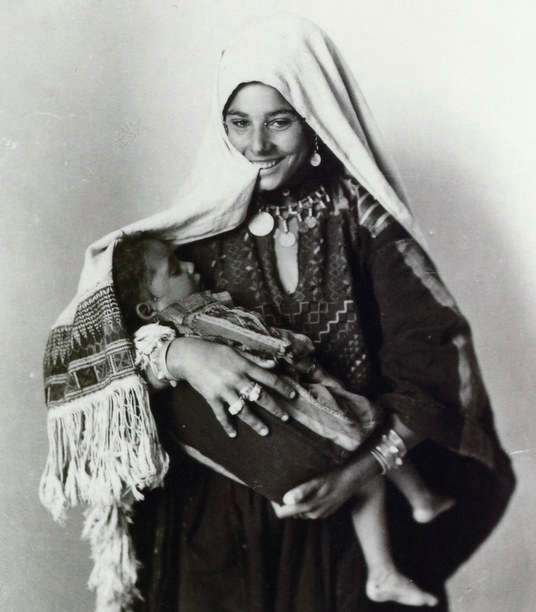
Credit: Khalil Raad
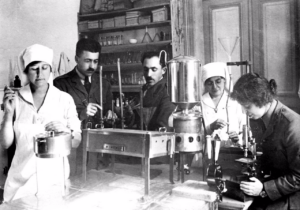
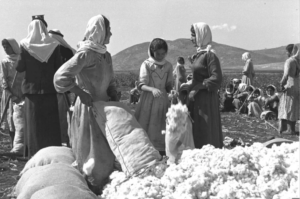

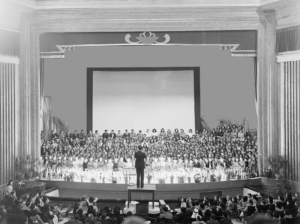
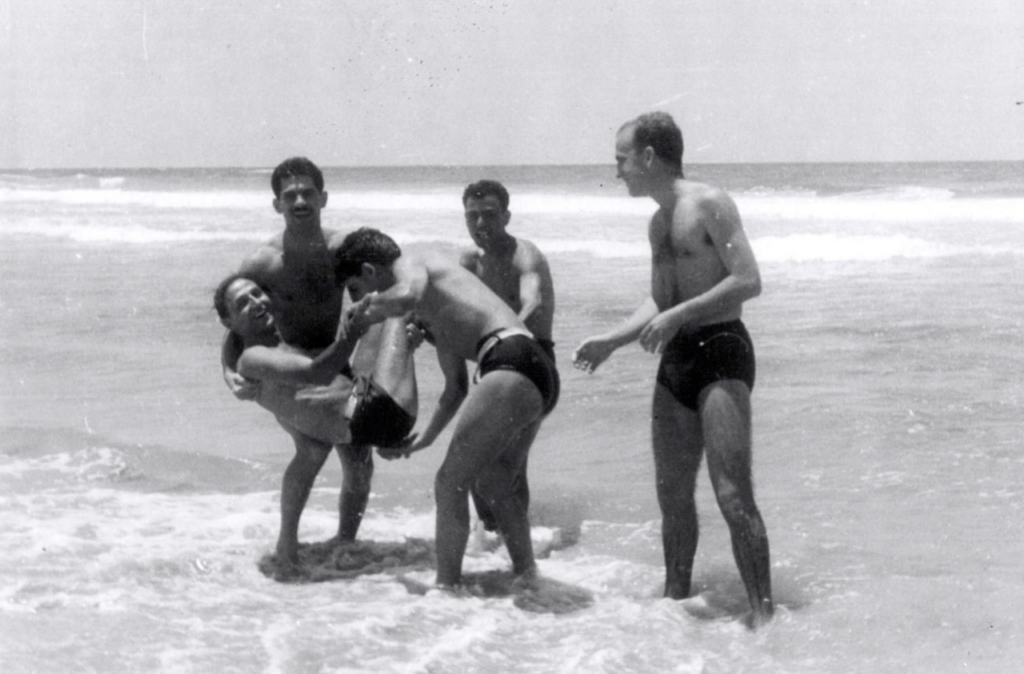
Credit: British Jerusalemites Photo Library
Transfer
Realizing the contradiction between their goal of creating a Jewish state and the reality of one million Palestinians on the ground, many Zionist leaders, including Theodor Herzl, Yosef Weitz, Ben-Gurion and others, explored plans to “transfer” Palestinians voluntarily or involuntarily to an Arab country, most often Syria or Iraq. They avoided discussing the details of these secret plans in public.
In his book, The Expulsion of the Palestinians: The Concept of Transfer in Zionist Political Thought 1882-1948, the Palestinian historian Nur Masalha emphasizes the centrality of transfer in Zionist thinking from the very beginning and describes many secret plans Zionist leaders explored for transferring Palestinians to an Arab country. According to Masalha, the Zionist leadership even conditioned their acceptance of a 1937 partition plan on a commitment from Great Britain to a transfer of the Palestinians to an Arab country.
Benny Morris, the most prominent Israeli new historian, writes that in 1948, almost all the Zionist political and military leaders understood “that transfer was what the Jewish state’s survival and well being demanded.”[9
The United Nations passed the Partition Plan on Nov. 29, 1947. The Jewish Yishuv actively supported and publicly accepted partition, although privately Ben-Gurion and other leaders had very serious reservations, as the plan envisioned a Jewish state with a large number of Palestinians. This raised the demographic issue that concerned members of the Zionist leadership.
The six months between the United Nations acceptance of the Partition Plan and the Declaration of Independence were primarily a civil war between the local Arab communities who were untrained and poorly armed, and the Yishuv and their trained and armed Zionist militias. In this period, the Zionist forces developed several military plans and acted with great determination and success to affect “the transfer” of the Palestinians by force. They did this by attacking Palestinian villages, then urban areas with a large Palestinian population like Jaffa, Haifa and others. All this before any regular Arab armies entered Palestine on May 15, 1948. The Zionist forces had already expelled 300,000 Palestinians and effectively depopulated Ramle, Lod, Jaffa and Haifa.
It is also during this time period that one of the most well-known massacres of Palestinians by Zionist forces in Deir Yassin took place. About 100 people were killed in the village that had signed a peace agreement with Givat Shaul, the neighboring Jewish town. The attack initiated by the Irgun and Lehi, the right-wing militias, with the approval and foreknowledge of the Haganah, ended with parade of prisoners on a truck driving through the streets of Jerusalem intended to terrorize Palestinians into flight. It was one of the first massacres, but by no means the last
Israeli scholars agree that there were at least 25 massacres and maybe as many as 40. Some involved the murder of a smaller number of people and some were larger. Palestinian oral reports often tell about massacres that are sometimes confirmed by Israeli scholars much later.
Demographic Change is the Goal
The constant goal of the attacks by Zionist forces, including the massacres, the expulsions and other acts of cruelty in the period before the war and through June 1949, was demographic to maximize the number of Palestinians who would be displaced and the number of Jewish immigrants who would replace them. This demographic goal has been at the core of Zionist and Israeli policy from the beginning of Zionism until today.
Ramle and Lydda
One of the massacres and a mass expulsion that is acknowledged by liberal Zionist thinkers such as Benny Morris and the Israeli author Ari Shavit is the expulsion of Palestinians in Ramle and Lydda (now known as Lod), carried out in July 1948. This includes a massacre of Palestinians seeking protection in the mosque in Lydda. In his autobiography, Yitzchak Rabin writes about Ramle expulsion. He asked Ben-Gurion what they should do with the population, and Ben-Gurion motioned with his hand to say “expel them.”

In his 2013 book, “My Promised Land: The Triumph and Tragedy of Israel,” Ari Shavit, the former Haaretz columnist, writes about the massacre in Lydda (Lod) and the expulsion from Ramle. Shavit’s book was widely read in the Jewish community, and for many Jews, it was the first time that they heard about a massacre and expulsion that Israel committed in the 1948 war. For some, it was a shocking revelation. But Shavit justified it as a necessary action:
Lydda is our black box. In it lies the dark secret of Zionism. The truth is that Zionism could not bear Lydda. … If Zionism was to be, Lydda could not be. If Lydda was to be, Zionism could not be. (p. 108)
In a published article, the historian, Joel Beinin quotes an earlier interview with an Israeli newspaper in 2001 in which the Israeli “New Historian” Benny Morris stated, “What happened in 1948 was inevitable. … Without a population expulsion a Jewish state would not have been established here.”
Tantura
In 2022, Tantura, a documentary by an Israeli director, confirmed that a massacre occurred in that village that Palestinians have written and spoken about for many years. The story teaches us a great deal about the intensity of Nakba Denial in Israel and in the American Jewish community. (The film is now available on several streaming sites.)
Tantura was a beautiful Arab fishing village on the coast between Acre and Haifa. For years, Palestinians reported that there was a massacre in Tantura, as they have about many other massacres.
An interview of a massacre survivor has been recorded by Zochrot, the only Israeli organization that is dedicated to telling the story of the Nakba. Despite the reports by Palestinians, the massacre at Tantura was not regarded as a historical fact until 2022. Here is the story:
Teddy Katz, a student at the University of Haifa, completed a master’s thesis in 1998 about what happened in Tantura. For his thesis, Katz conducted 60 hours of interviews with members of the Alexandroni Brigade who were responsible for the alleged massacre. The thesis for which he received very high grades was placed in a library at the university where it remained until the Israeli newspaper Maariv published an article about his thesis in 2000. Then, all hell broke loose. The members of the Brigade were incensed. They denied what they had told him and sued him for libel. Facing family pressure and having recently suffered a stroke, Katz retracted his account of the massacre six hours before the court hearing without consulting his lawyer. The members of the Brigade rejoiced, calling the retraction “the end of a blood libel.”
That was the end of it until the release earlier this year of the movie by Alon Schwartz that includes some of the oral testimony that Teddy Katz recorded for his thesis. Like so many other destroyed Arab villages on which kibbutzim were created, Kibbutz Nahsholim was built on top of the village just three weeks after the massacre, and the mass grave was covered by a parking lot. Nahsholim is now called Dor Beach. And it is a gorgeous and very popular beach in Israel. The parking lot for the beach covers one of the mass graves.
I have a friend who lives in Israel close to Dor Beach. On a phone call with him a few days after the news that confirmed a massacre had happened there, I talked with him about it. He was just shocked. “It is the beach we go to. In what universe does one wake up in the morning and read that the parking lot for your beach was the site of a massacre?”
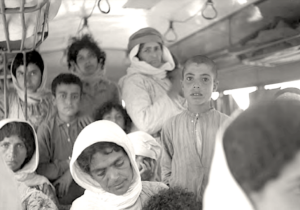
I think this story is revealing in several different ways:
First, it reveals the extent to which the events of the 1948 war are literally all around us in Israel, on the ground and below it. It took me many visits to Israel until I realized this reality on a visit in 2008. From then on, whenever I visited Israel, I was haunted by the signs all around that reveal the Nakba if one just knows how to read the signs. For instance, many kibbutzim built after 1948, and all new public parks and nature areas, were deliberately built on the site of destroyed Palestinian villages. Like so many liberal, progressive Jews, I spent time in Katamon and saw Arab houses all around, but it was only a few years ago that I began to wonder who built those houses and lived in them. One day at an event in Bethlehem, I told a Palestinian friend that I was staying in Katamon, and she told me that her family home is in Katamon!
Second, it also reveals the level to which there is an Israeli consensus to bury the topic of the Nakba. The perpetrators joined together to deny the truth that some of them had already revealed to Teddy Katz. Had the film not been made, we would still not know the details of this massacre.
Where else did massacres happen? What other atrocities have been buried? Sadly, the details of these realities may be hidden forever or exposed very slowly in the future. As I said earlier, Israeli and Palestinian historical research has solid evidence for at least 25 massacres, and there are maybe as many as 40 or more. There is also historical research that shows that there were many counts of rape, and unrestrained looting and theft of property. I hope that one day there will be a Truth and Reconciliation process in Israel/Palestine and perpetrators or children or grandchildren of perpetrators will confess to the crimes that were committed.
3. ‘Teshuvah’/Repair/Return/Reparations
I am convinced that there is overwhelming evidence that the Nakba was a catastrophe Jews inflicted on Palestinians to create a Jewish state in Palestine. This, I believe, is the reality of the State of Israel. It breaks my heart to articulate this in public, but it is the truth. We must reject the denial of the Nakba wherever we encounter it.
For me, as a Jew and a rabbi, and for all of us as Jews or people of other faiths or people of conscience, this poses a painful moral dilemma. Our community has harmed and continues to harm the Palestinian people every day in so many ways. How can I, or we as Jews, ignore this reality?
Pesakh
The message of Passover is central to Jewish ethics and encapsulates for me the most important Jewish teaching. “You shall never oppress a stranger, because remember you were “other”/“strangers” in the land of Egypt. This commandment is repeated in the Bible 36 times. Abused people abuse, and hurt people hurt people. Our Torah insists that our collective pain and suffering can and must increase our empathy for others. For me and for many Jews, this is the essential teaching of Judaism.
It is clear that the Nakba in 1948 and since is a clear violation by our people of what many Jews consider to be the essence of Judaism. It is time now for us to do a heshbon nefesh/a soul reckoning/a deep acknowledgement of all the harm that we inflicted and continue to inflict on the Palestinian people. Acknowledgement is just the first step. It must be followed with repair and a deep commitment not to repeat the hurt and to support the Palestinian struggle for justice, equality and freedom for all.
As a Jew, I believe that the Nakba in 1948, and the ongoing Nakba — the ongoing theft of Palestinian land and daily violation of their basic human rights — is the most important ethical and spiritual issue facing the Jewish people in our time. Our people will be judged, and we will judge ourselves, by whether we will treat others differently when we have power over them. Will we mistreat others in the same way we were mistreated, or will we follow the ethical imperative of our tradition to treat everyone as an individual created in the image of God deserving of equality, compassion and love? This is a moral question on which the future of Judaism and the Jewish people rests in our time.
Israel/Palestine is the issue over which our community exerts disproportionate influence and power that causes harm to Palestinians since 1948. It is this harm that we need to confront and do teshuvah.
We must ask ourselves what is the cost that Palestinians should pay for our safety? We simply must create a different reality where both peoples thrive, not one at the cost of the other.
In 2022, the Reconstructionist movement boldly took on a commitment to support reparations for African Americans, the descendants of slaves. My hope is that our movement will affirm reparations for Palestinians whose land was stolen by Israel. My hope is that the Reconstructionist movement will teach rabbis, rabbinical students and members of our congregations about the Nakba and systemic racism in Israel, as it teaches about systemic and structural racism in the United States.
The first step of teshuvah is hoda’a/acknowledgement. The very first step is to challenge the denial by acknowledging the truth of what was done, no matter how painful that acknowledgement may be.
I don’t know if we have the power to turn around the structural injustice in Israel. What I do know is that teshuvah is the only path that offers a brighter future for everyone or at least for a greater number of people. I grew up in a country that it seemed would never change, but it did. What made it change was a concerted effort of teshuvah/moral responsibility by folk in South Africa and around the world that racial domination must end. South Africa is by no means a model state, but it is a much more humane place for a larger number of people than it was when I was growing up. And there is hope that it could move further towards justice and equality for all.
I hope for our sake, for the sake of the Israelis and for the sake of Palestinians, this comes true. Kein yehi ratzon. May it be our will. May it be God’s will.
Additional resources annotated by the author are available here.
Thanks to fellow organizers and, in particular, to Joel Beinin who was so helpful. Also to Brant Rosen, who read one version of my talk and Laurie Zimmerman. Both have been colleagues who have been comrades in this work for many years now.
Special thanks to Nadia Saah, the director of Project 48, for help with the visual images included above and also for her wisdom, kindness and passion for justice for her people and all people.
NOTES:
[1] In addition to the information and analysis in my talk, there are many books, articles, podcasts and movies that document the expulsion and dispossession of the Palestinians in 1948. An annotated list of resources can be found at the end of the essay.
[2] Walid Khalidi, “Plan Dalet: Master Plan for the Conquest of Palestine,” Journal of Palestine Studies, p. 6
[3] The New Historians are Israeli scholars who studied the classified documents from 1948 that were declassified in the 1980s. The most prominent of these historians are Benny Morris and Ilan Pappe. Until the work of the New Historians, the Israeli version of what happened in 1948 was the position that I heard as a 17-year-old from Ben-Gurion. The new historians studied the documents that revealed evidence of deliberate expulsion, massacres, forced marches from towns and villages, and other atrocities. This version of history was well known to Palestinians, but most Israelis simply don’t know and/or denied that Israeli forces deliberately expelled Palestinians, destroyed their villages and refused to allow them to return to their homes. Palestinians have told the story of the Nakba for years. There are still hundreds of photos and documents that have never been declassified, and recently, the Israeli government has reclassified documents that the New Historians studied. You can read more about this in this article in Haaretz. You can find some of the books and articles by Benny Morris and Ilan Pappe listed in the resource list at the end of this essay.
[4] Benny Morris, “The Causes and Character of the Arab Exodus from Palestine: The Israel Defence Forces Intelligence Branch Analysis of June 1948,” Middle Eastern Studies, Vol. 22, No. 1 (January 1986), pp. 5-19.
[5] Dr. Fuad Ismail Dajani (1890-1940) was a respected Palestinian physician who founded his own private 55-bed hospital in Jaffa in the 1930s. The building served as a maternity and surgical hospital for the residents of Jaffa and the British officers. Although the name was changed after the Nakba, many residents still call it the Dajani Hospital.
[6] Kfar Saba or Capharsaba was a Palestinian Arab village with a population of 1,300, famous for its shrine dating to the Mamluk period and for a history stretching back for two millennia. Some 1,026 dunums were used for citrus and bananas, 4,600 dunums for cereals, while 355 dunums were irrigated or used for orchards, of which 30 dunums were planted with olive trees. On May 13, 1948, Kfar Saba was depopulated of its Palestinian Arab residents by the Alexandroni Brigade of the (pre-state of Israel) Zionist militia, the Haganah.
[7] Jaffa’s Al Hambra Cinema opened in May, 1937 as a plush 1,100 seat multi-purpose venue featuring the latest films and most popular performers in the Middle East, including Umm Kultum, Farid a-Atrash, and Leila Mourad
[9] Morris, Revisiting the Palestinian Exodus of 1948 in the War for Palestine, p. 48.
[10] Specifically, this image is from April, 1948, and depicts the city of Haifa after the Haganah’s Carmeli Brigade lay siege to the city to drive out the Palestinian residents. 15,000 civilians were forced to flee April 21-22.

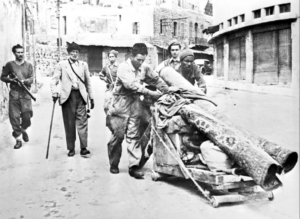
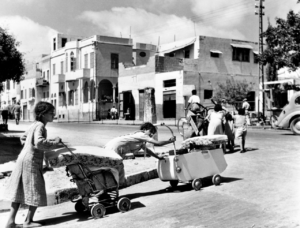







13 Responses
Rabbi Brian, thank you for this deeply informative essay. Teshuvah Reparations is a term I first used a decade ago in relationship to repaying the debts of ongoing harms for the transAtlantic Slave Trade as they unfold in our times. I then applied it to Palestine in its five stages and held a seminar on the topic with Dr. Dave Ragland and Zac Barghouti. Teshuvah Reparations is a specific framework developed with many people of color on the front lines, in particular African Americans working on reparations through The Truth Telling Project and the Grassroots Reparations Campaign. I’d like to honor their place in using the term and developing the concept Reparations and Land Back Teshuvah. As we know, honoring where things come from is part of a teshuvah framework. Acknowledgement must lead to accountability which is where reparations/peiraon comes in – payment for the debt of massive and ongoing theft for which Jews and the Israeli state are deeply accountable. Nakba is ongoing. Thank you. Rabbi Lynn Gottlieb
Thank you for this insightful and important piece.
just came to this. Lengthy, insightful, important. I am looking into local synagogues where community is strong and social action. i have great Palestinian friends and feel a solution to vast inequity and denial will involve coexitence as in together. To everyone an olive tree. There is a solution involving a postage sized country. Been pondering this for a long time. I am a poet and writer.
Such an important article. Thank you and all who have worked to reveal the truths of the Nakba in service of a more just future.
Dear Brian, Thanks so much for your historical piece, challenging/correcting the dominant narrative – and for the photos, including the one of you towering over Ben Gurion. Sheila and I have been learning more and more about the Nakba over the years, and have come to understand its reality. Over the last few years the Combatants for Peace, a group we support and last visited with a mostly Philly group this past October, have presented a Nakba remembrance day. It is done fairly soon after the Joint Memorial, and this year will be on May 5th. We hope your piece gets to a wider audience. Shalom/Salaam/Peace, Sheila and Maynard
Thank you Rabbi Brian for this important work.
Rabbi Brian, like you, I grew up in Cape Town with a similar Zionist upbringing. (I’m six or seven years older than you). In 1967, as a twenty year-old, filled withZionist idealism, I volunteered onKibbutz Givat Brenner. Like you, it took me many years to understand and really “grok” what you’ve expressed so eloquently in your article, and I have come to much the same conclusion. Thank you for this courageous truth telling.
Thanks so much, Michael. Always very special to connect with folk from South Africa shaped by Zionist Judaism in our young years and then trying to make sense of the similarity between our experiences in South Africa and Israel. It is an important and painful journey.
Brian Walt
Brian, what a thoughtful and well researched article. It has given me a lot to think about.
I would like to share a prayer I wrote called “A Prayer for the Land of Israel/Palestine”:
Dear G-d,
I pray for the day when true justice, dignity, and equality will be the law
of the land in Israel/Palestine both politically and spiritually. Jews and
Palestinians will live together in harmony, and national and individual
rights shall be guaranteed to all. We shall understand that Palestinians
have a legitimate right to the land and do teshuva for our crime of
dispossessing them of their land. It is incumbent on Jews to remember
that we were created in the image of a compassionate G-d who cares
for all humankind. G-d, I hope you hear my prayer and inspire us to live
up to our best selves. Amen.
Sincerely,
Evelyn Ophir
Delray Beach, FL
Dear Brian,
I read through your article with great interest; it represents such an important life work, courageously exposing truths that so many would deny as the Nackba continues. It’s a tragic story, paralleled, I’m afraid, by the fate of the Civil Rights movement into which so many of us threw ourselves in the 1960’s. There were great gains, and now so much brutal regression and backsliding. Only love, though, can build harmony, and without harmony there is no survival.
I can’t help believing that, as our generation in the 1960’s saw through the lies of our parents’ generation, and awoke to the presence of courageous new leadership, our children will awake to the disaster which their parents’ generation has, and is creating. I’m no easy optimist, but I’ve been enormously impressed with young Israelis who remind me of what we were a generation ago — smart, determined, principled, attractive, and I’m hopeful for the same thing here.
I really do hope that Annie and I will be able to get down to Martha’s Vineyard one of these days, and catch up with you and Karin(sp?).
Dear Rabbi Walt
I came upon your message last night as I was reading reports about Masafer Yatta and the 30 year quest that ended up with the Supreme Court’s judgement supporting its takeover as a large army firing zone and the eviction of Palestinians and their sheep cattles while simualtaneously allowing new settlers to move in with their sleep cattle and new buildings. Another travesty in the journey to the present .
I grew up in Jaffa and became a stateless, homeless refugee 75 years ago. I’m now a 90 year old Nakbah survivor, infintely hopeful for a solution based on the eternal truths of equality, justice and mutial respect for everyone.
We have the capacity to overcome greed, anger, hate, fear and mistrust. I’m ever hopeful to heal Israel/Palestine into a role model for the world’s woes of extremism, colonialism and suprematism.
I thank Rabbi Walt for presenting this material on the ongoing catastrophe Israel has been inflicting on the Palestinians. I wish all American Jews could discuss it in the places they normally review matters of importance to world Jewry. And I, at 88, agree with Rabbi Walt that the Israel-Palestinian conflict (now well over a century in age) is the greatest challenge to essential Jewish values in our time. No need for me to review the history of the conflict, but I will add only this: For many years whenever people told me they were going to Israel, it has been my practice to ask them, “Which Israel are you visiting, the one in your head or the one on the ground?” (I write this in the midst of the ongoing Gaza catastrophe, Jan. 28, 2024. I am a retired professor of Jewish Studies.)